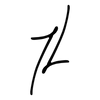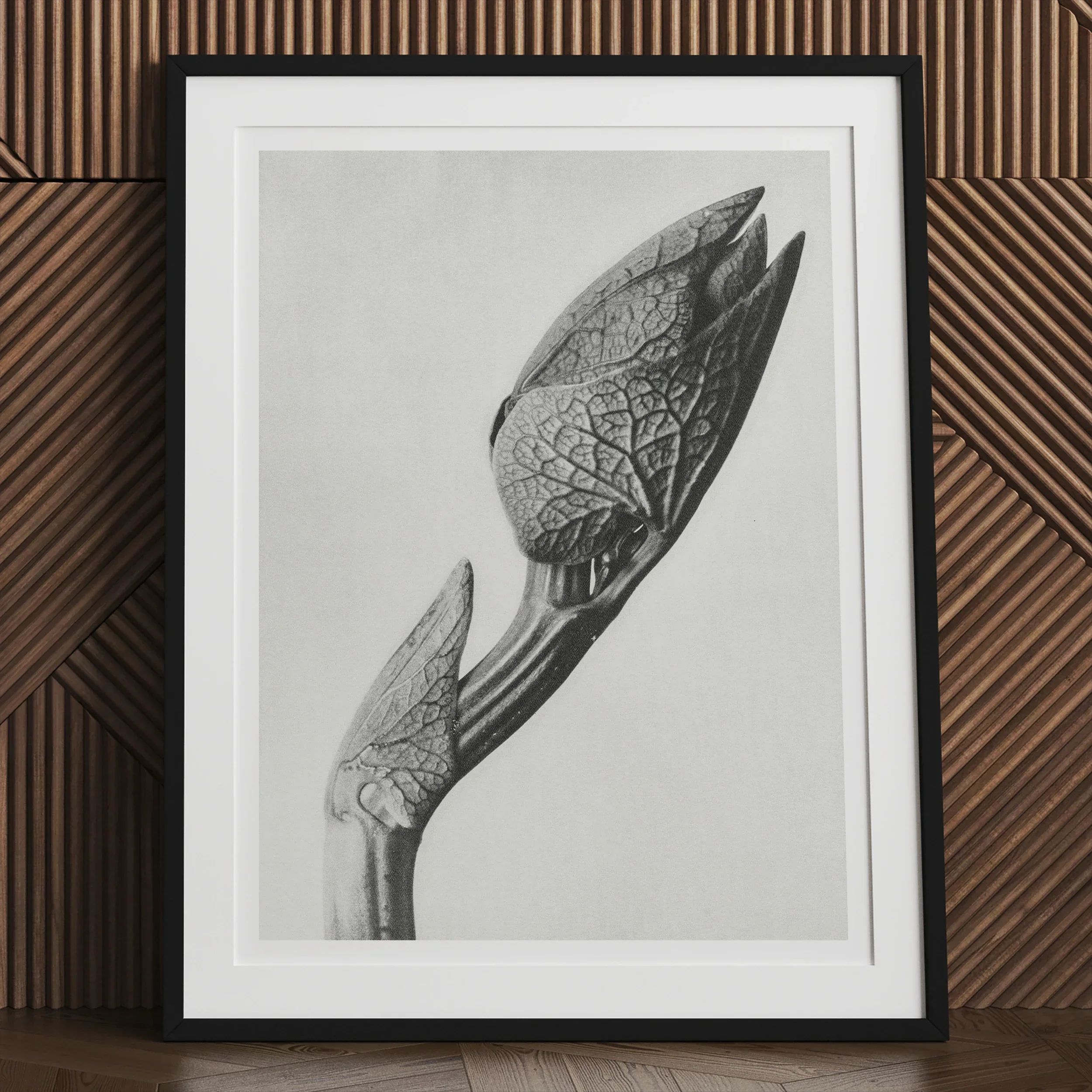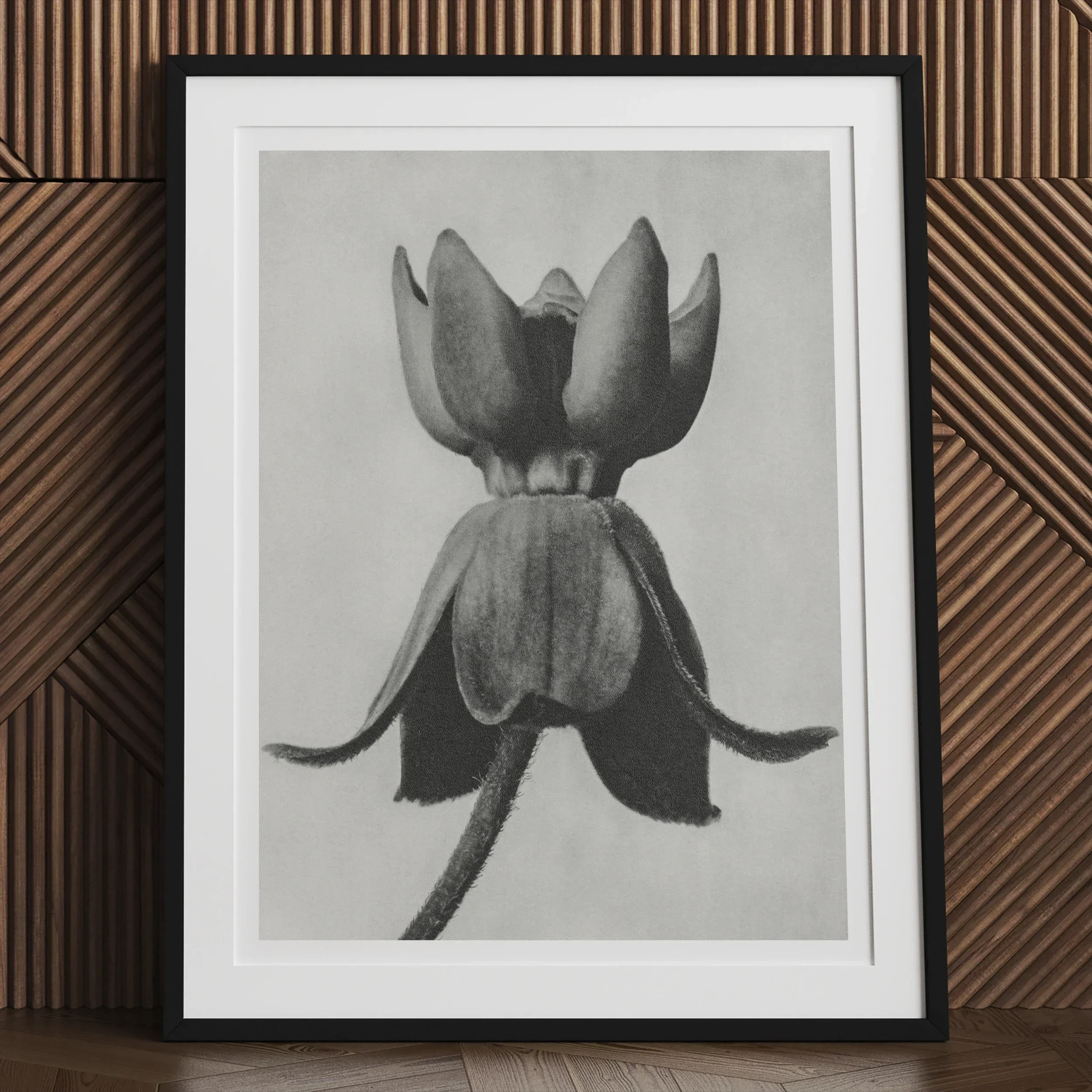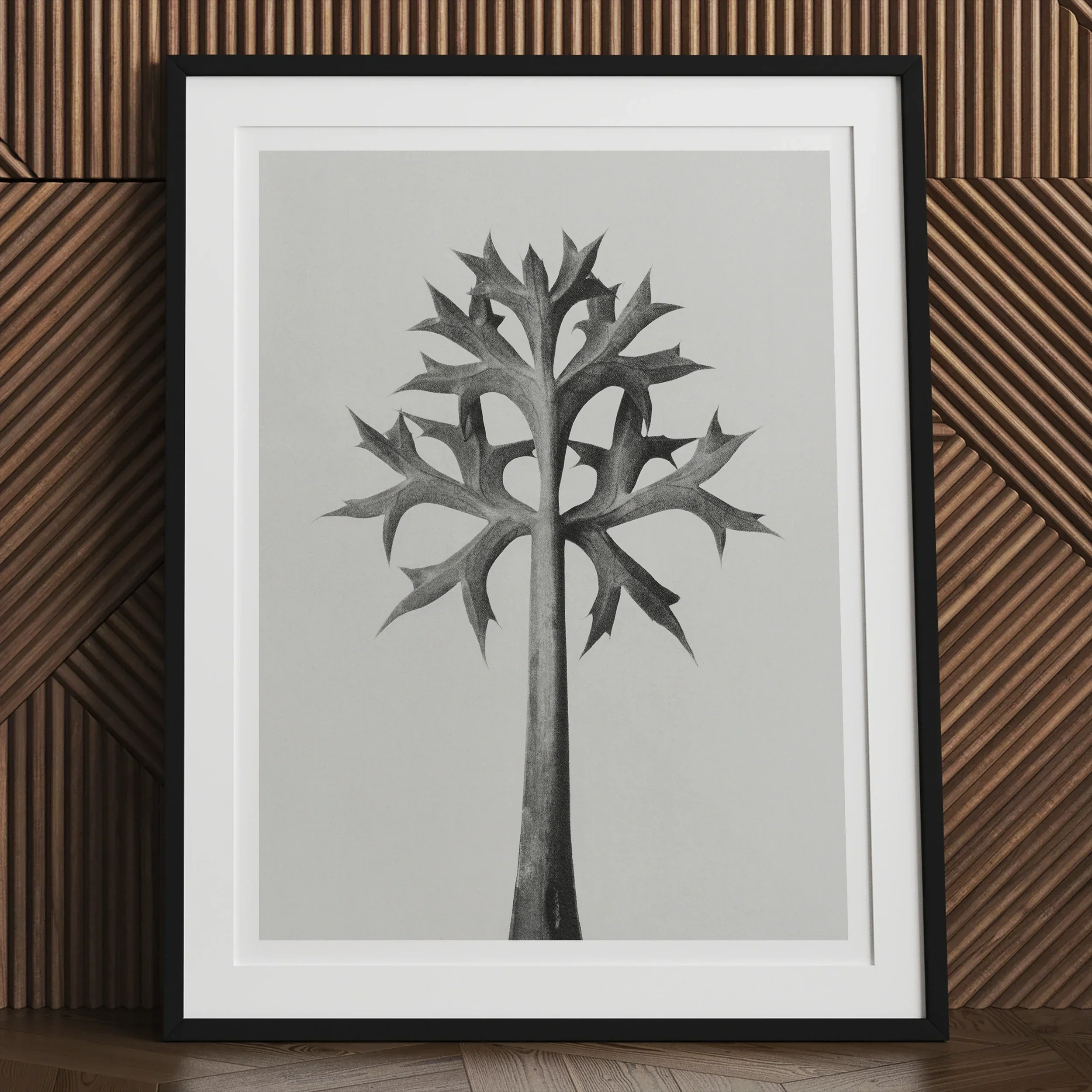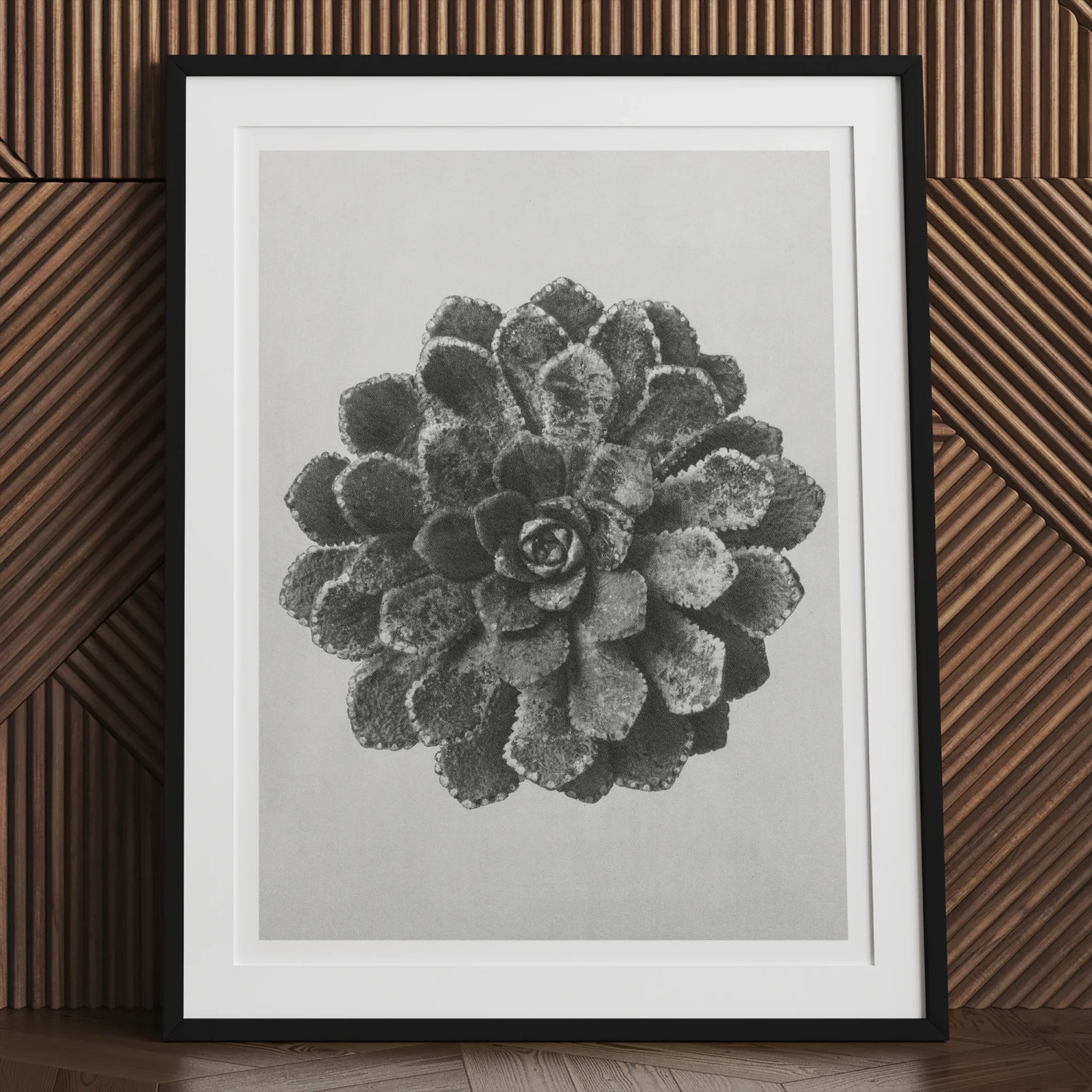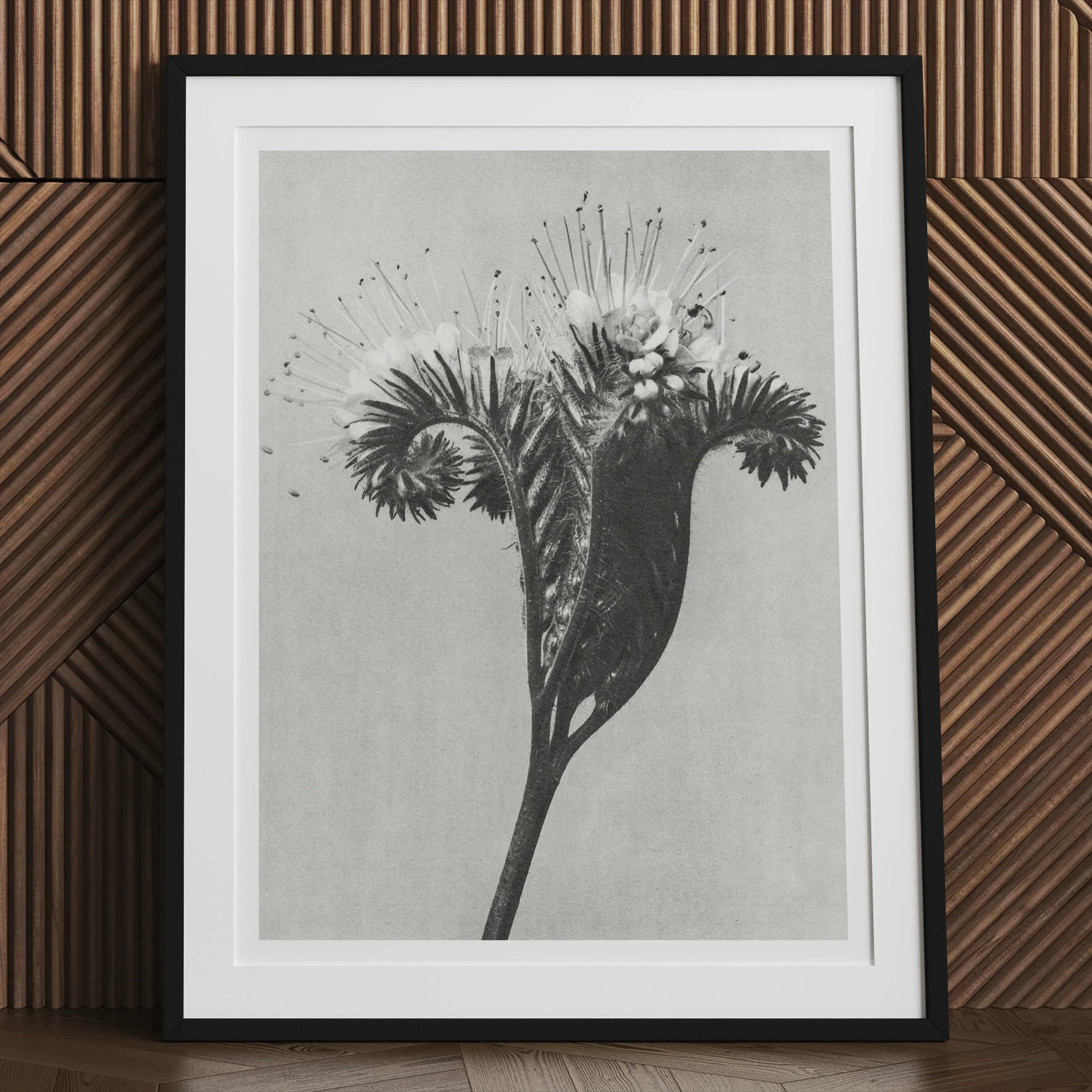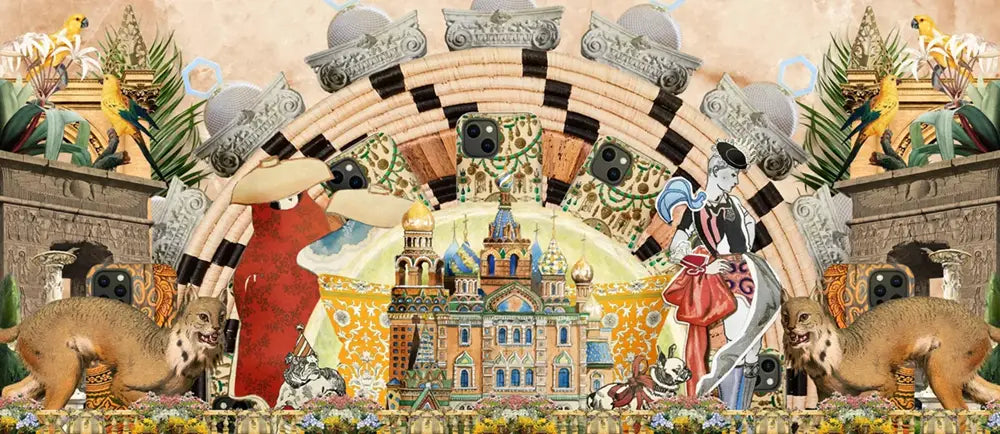A seed pod, no bigger than a thumbnail, unfurls like a baroque cathedral. A horsetail stem, once trampled roadside detritus, rises in the frame like a Corinthian column sketched by Vitruvius himself. Through the unblinking lens of Karl Blossfeldt—a sculptor-turned-camera-mystic—nature sheds its docile skin and reveals its architecture: fierce, rhythmic, primeval. This was not mere documentation. It was revelation.
Between 1890 and 1932, Blossfeldt transformed weeds into monuments, tendrils into calligraphies, and botany into a language of form as sacred as geometry. He built his own cameras like a monk chiseling an altar, magnifying the overlooked vegetal vernacular of Europe’s wild edges up to 30×. His project was both devotional and insurgent: to dethrone artifice and seat nature herself at the drafting table of modern design. No soft-focus romance, no painterly indulgence—Blossfeldt’s gaze was surgical, ascetic, and astonishingly tender.
This blog post dives deep into his life's work: not just what he made, but how and why. From the rigors of Neue Sachlichkeit to the reveries of Surrealism, from Bauhaus minimalism to the speculative poetics of biomimicry, we follow the shockwaves of his plant portraits across photography, architecture, and contemporary ecological aesthetics. Blossfeldt didn’t just photograph nature. He framed its hidden intelligence—and in doing so, redrew the blueprints of modern vision.
Key Takeaways
-
Karl Blossfeldt turned botany into geometry, elevating roadside weeds into sacred forms through rigorous magnification and architectural framing.
-
Using handmade cameras with up to 30× magnification, Blossfeldt unveiled the invisible intricacies of plant life—recasting leaves, tendrils, and pods as design blueprints for the modern era.
-
His photographic style embodied the ethos of New Objectivity, offering crisp, unembellished studies of form that straddled the scientific and the sublime.
-
Blossfeldt’s work blurred the lines between art, science, and design, profoundly influencing Bauhaus pedagogy, Surrealist aesthetics, and the emergence of biomorphic architecture.
-
His legacy endures in macro photography, industrial design, and biomimicry, proving that nature is not only muse but master architect—and that every petal or spine may hold the key to the future of form.
Artistic Philosophy and Methodology: Nature as Architectural Muse
 Blossfeldt’s artistic philosophy centered on the idea that nature is the architect of all forms. As a young art student in Berlin during the height of Jugendstil (Art Nouveau), he absorbed the era’s emphasis on organic design inspired by plants. He later declared that a plant must be valued as a totally artistic and architectural structure, reflecting his conviction that natural forms embody the same design principles found in human-made art and architecture. This philosophy guided his life’s work: creating a visual encyclopedia of plant forms to inspire artists and designers.
Blossfeldt’s artistic philosophy centered on the idea that nature is the architect of all forms. As a young art student in Berlin during the height of Jugendstil (Art Nouveau), he absorbed the era’s emphasis on organic design inspired by plants. He later declared that a plant must be valued as a totally artistic and architectural structure, reflecting his conviction that natural forms embody the same design principles found in human-made art and architecture. This philosophy guided his life’s work: creating a visual encyclopedia of plant forms to inspire artists and designers.
Self-taught Revolutionary
Karl Blossfeldt did not stumble into photography—he forged it, piece by piece, like a blacksmith building a microscope. He was not trained in photography, nor particularly enamored with the camera as a tool of aesthetic indulgence. Instead, he was a sculptor, a teacher, and most crucially, a patient conspirator with nature. His tools were functional, even austere: large-format cameras assembled with surgical intention, rigged with custom lenses that magnified plant structures up to thirty times their natural size. Each device was a bridge—not just between eye and object, but between the mundane and the monumental.
With these self-built instruments, Blossfeldt became an architect of perception. The scale of his subjects inverted all expectations. A fern unfurling under his lens took on the poise of wrought iron; the segmented stalk of a horsetail mimicked the geometry of stacked totems. These were not pictures of plants. They were excavations of form, photographic reliefs cut from the living skin of the botanical world. He posed his specimens not in lush gardens, but stripped bare against stark monochrome backgrounds—white, grey, or deepest black—eliminating every distraction except structure.
The light? Always diffuse, filtered from a north-facing window like a scholar’s lamp. The angle? Always orthogonal—side-on or straight ahead—never swooping, never coy. This was not botanical illustration masquerading as art. It was the raw grammar of macro photography, spoken in the clearest tongue of objectivity. Blossfeldt did not seek to seduce the viewer. He sought to retrain the gaze.
Philosophy
Blossfeldt believed that nature was not merely a resource for art—it was art’s ancestral source code. As a young student immersed in the sinuous motifs of Jugendstil (Art Nouveau), he had absorbed the era’s yearning for organic elegance. But where others found inspiration in the swirling vine, he saw deeper—into the logic of design itself. “The plant must be valued as a totally artistic and architectural structure,” he declared, not as metaphor but as axiom. Plants were not decorations. They were blueprints.
His method followed suit. Each photograph was not a snapshot but a study—an anatomical meditation. Before pressing the shutter, Blossfeldt curated his specimen with a sculptor’s eye. He removed errant leaves. He aligned axes. He arranged multiple stems to echo rhythmic motifs or symmetrical hierarchies. The results were uncanny: natural objects, stripped of context, staged like miniature buildings—columns, volutes, latticework, spires.
Consider his iconic image of coiled maidenhair fern tendrils. Under Blossfeldt’s gaze, they no longer read as foliage, but as architectural ironwork, or the curled volutes crowning a Corinthian capital. Each spiral becomes a statement of design perfection, a glyph of recursive elegance. Their organic growth patterns—what a botanist might call circinate vernation—are revealed as acts of silent, perfect engineering. These are the secret geometries of life, which Blossfeldt did not invent but unveiled.
And where did he source his models? Not from manicured parks, but from ditches, vacant lots, railway embankments. Weeds, in his world, were not refuse but raw material—proof that design genius blooms even in the margins. The democratization of beauty was embedded in his practice: it required only a magnifying lens, a background of silence, and a refusal to look away.
Methodology
Blossfeldt’s process remained nearly unchanged for over three decades. From the 1890s through the 1920s, while teaching at the Berlin Arts and Crafts school, he constructed a vast visual archive: more than 6,000 close-up plant portraits, each a module in a silent, radical curriculum. He wasn’t aiming for gallery walls or book deals. These were pedagogical tools—designed to train the next generation of artists to see like naturalists, to design like evolution.
He wasn’t even considered a "photographer" in the conventional sense. He didn’t exhibit. He didn’t submit to salons. He didn’t court acclaim. His devotion was singular: to reveal the morphological intelligence of plants. Ironically, it was this abstention from aestheticism that gave his work its potency. By eliminating personal flair, he became an amplifier for nature’s own voice.
Yet behind the camera, his hand was anything but passive. The neutrality of the image—plain backgrounds, consistent scale, frontal composition—was a carefully orchestrated restraint. This standardization, almost scientific in rigor, allowed the viewer to compare, contrast, and decode. A leaf’s venation was as legible as Gothic tracery. A seedpod, once scaled and framed, could stand beside a Brutalist façade and demand comparison.
His titling method underscored this empiricism. “Equisetum hyemale (Rough Horsetail)” or “Adiantum pedatum (Maidenhair Fern)”—each name carried its Latin authority like a citation. And yet, despite this formal taxonomy, the images themselves radiated a quiet lyricism. They evoked not just structure but atmosphere—as if the plant had been captured mid-sentence in its private dialogue with time.
Critic Karl Nierendorf grasped this duality when he wrote of the unity of the creative will in Nature and in Art. Blossfeldt’s photographs, he insisted, were not interpretations—they were demonstrations. Nature, when given the stage, designs with such elegance that it surpasses ornament. It becomes ideal.
Neue Sachlichkeit and Bauhaus: Blossfeldt in the Modernist Photo Movement
 When Blossfeldt’s work finally entered the public arena in the mid-1920s, it was immediately embraced as exemplary of the era’s new photographic vision.
When Blossfeldt’s work finally entered the public arena in the mid-1920s, it was immediately embraced as exemplary of the era’s new photographic vision.
In 1926, gallerist Karl Nierendorf discovered Blossfeldt’s trove of plant images and exhibited them in his Berlin gallery – the first time Blossfeldt’s photographs were shown outside an academic context. The timing was perfect.
New Objectivity
In 1926, Karl Blossfeldt’s private collection of botanical close-ups emerged from the cloister of academia and entered the public eye—not with a whisper, but with the electric clarity of a tuning fork struck in the cathedral of modernity. Gallerist Karl Nierendorf mounted a show of his photographs in Berlin, and the timing was exquisite: Germany had grown weary of the fevered brushstrokes of Expressionism and was pivoting to something sharper, leaner, colder. The moment demanded precision. It demanded form. It demanded Neue Sachlichkeit.
Translated as New Objectivity, the movement offered a cure for emotional excess. After the delirium and disillusionment of World War I, German artists—painters like Otto Dix and George Grosz—turned toward clarity, order, and unsparing realism. In photography, this ethos hardened into something crystalline. Cameras no longer chased sentiment; they revealed structure. Every subject, from factory cogs to human faces, was reinterpreted through the twin mandates of detail and detachment.
Blossfeldt’s photographs, though made years earlier in pedagogical solitude, fit this new vision with uncanny precision. They were empirical. Ruthlessly composed. Unburdened by decorative fluff or symbolic fog. A thistle pod under Blossfeldt’s lens did not whisper of pastoral romance—it insisted on its geometry, its scaffolding, its factual grandeur.
Where other photographers romanticized their subjects, Blossfeldt dissected his. He isolated. He clarified. Each leaf or bud was presented as a self-contained object: no habitat, no narrative, just form under interrogation. But this interrogation, paradoxically, produced rapture. The viewer was stunned into awe—not by illusion, but by the overwhelming factuality of the natural world when seen without bias.
His method—frontal, standardized, and enlarged—was a manifesto of New Objectivity photography before the term had even fully crystallized. There was no painterly affectation, no chiaroscuro dramatics. The images said: Here is the structure. Here is the system. Look.
Blossfeldt’s photographs did not mimic the new era’s ideals; they prefigured them. The German periodical Uhu famously placed one of his images—a horsetail stem with clean, modular segments—opposite a photo of mosque domes in Cairo. The implied thesis: architecture is not invented. It is remembered. And nature is the first builder.
In this way, Blossfeldt became a patron saint of form—not through polemic, but through pure, empirical reverence.
New Photography
Among the vanguard of Neue Sachlichkeit, a sub-movement had already begun: Neue Fotografie, or New Photography. Here, form wasn’t just observed—it was weaponized. Photographers like Albert Renger-Patzsch, László Moholy-Nagy, Helmar Lerski, and August Sander turned their lenses on the banal and made it magnificent: steel girders, factory workers, door handles, brick walls. Under magnification and isolation, everything became a glyph.
In this optic revolution, the camera’s mechanical gaze became a metaphor for modern consciousness itself—precise, indifferent, hungry for structure. Moholy-Nagy declared that photography must "make visible what the naked eye cannot see." That declaration, though often credited to the Bauhaus, could just as easily have been Blossfeldt’s creed.
When Blossfeldt’s plant images were finally seen by critics and artists beyond his Berlin studio, they were immediately understood as a kindred revelation. What had once seemed like botanical teaching aids now blazed with avant-garde intensity. Nature became machine. Bud became code.
Walter Benjamin, in his 1928 essay News About Flowers, didn’t merely praise Blossfeldt—he canonized him. These images, Benjamin insisted, were part of a radical “inventory of perception.” Blossfeldt had not simply photographed plants—he had reprogrammed the eye. By stripping context and scale, he had unmoored objects from familiarity. The world looked back, and it was stranger than we had thought.
Benjamin likened Blossfeldt to Moholy-Nagy, Atget, and Sander—not because they shared technique, but because they shared visionary utility. Each used photography not to illustrate reality, but to alter its terms of access.
Blossfeldt’s work revealed an “unsuspected wealth of forms,” Benjamin wrote. Not invented forms—uncovered ones. The spiraling syntax of a seed pod, the fluted rhythms of a calyx—these were not decorative; they were ontological events.
This interpretive explosion recontextualized Blossfeldt's oeuvre. Suddenly, what had been provincial and obscure became central to modern photography’s evolution. His images offered a bridge between disciplines, between art and science, between objectivity and hallucination.
Bauhaus
In 1929, Karl Blossfeldt was invited to exhibit at the Bauhaus in Dessau—a moment of quiet culmination. There, in the temple of modernist design, his work was welcomed not as anomaly but as ancestor. It was the visual grammar Bauhaus had long theorized—only Blossfeldt had rendered it decades earlier, with weeds and homebuilt cameras.
At the Bauhaus, Moholy-Nagy had been championing a “New Vision”: photography unmoored from tradition, used not to imitate painting but to uncover structure, surprise, and systems. He urged students to explore strange perspectives, magnifications, X-rays, and photograms. Blossfeldt’s images—immaculate close-ups of organic form—were held up as exemplars of that ethic. They were what modernism looked like before it named itself.
The 1929 Film und Foto exhibition in Stuttgart, organized in part by Moholy, placed Blossfeldt’s work alongside that of Rodchenko, Man Ray, and Edward Weston. Here, among solarized portraits and dynamic photomontages, stood Blossfeldt’s horsetails and hellebore buds—still, frontal, unsentimental. And yet they dazzled. They didn't need distortion to feel uncanny. They already were.
Blossfeldt’s inclusion affirmed the foundational role his work played—not as an aesthetic flourish but as a template for Bauhaus principles. His method—dissecting form, minimizing interpretation, foregrounding function—was essentially a photographic corollary to the mantra “form follows function.”
Josef Albers’ material studies, which analyzed texture and modularity, could’ve been illustrated by Blossfeldt’s photogravures. The photographs became a silent curriculum for design thinking. The veins of a leaf were not just lifelines—they were diagrams of efficiency. The radial symmetry of a flower wasn’t mere ornament—it was load-bearing logic.
Blossfeldt’s appeal to the Bauhaus wasn’t ideological—it was morphological. He showed, in image after image, that nature had already solved the formal problems that modern design was just beginning to pose. You didn’t need to invent a new aesthetic. You needed to learn to see.
Surrealism and the Scientific Uncanny: Natural Forms in a New Light
 Karl Blossfeldt never intended to make the subconscious bloom. He was not a dreamer. Not a psychic explorer. Not an occultist of the lens. And yet, by the late 1920s, his sharply magnified botanical portraits found themselves refracted through the cracked mirror of Surrealism—repurposed by artists who saw, in his supposed objectivity, something far stranger: the irrational made visible by absolute clarity.
Karl Blossfeldt never intended to make the subconscious bloom. He was not a dreamer. Not a psychic explorer. Not an occultist of the lens. And yet, by the late 1920s, his sharply magnified botanical portraits found themselves refracted through the cracked mirror of Surrealism—repurposed by artists who saw, in his supposed objectivity, something far stranger: the irrational made visible by absolute clarity.
To Blossfeldt, a coiling tendril was an architectural motif. To Georges Bataille, it was a phallic spiral of vegetal delirium, leering back at human reason. This collision of intent and interpretation—cold formalism turned hot with subtext—marks one of the most fascinating afterlives of Blossfeldt’s oeuvre. It reveals how an image meant to instruct can instead destabilize, and how the scientific eye, when held too long, begins to hallucinate.
The Surrealist Reframe
Surrealism, by 1929, had grown bored with the romantic unconscious. Its dissidents—led by Bataille, more heretic than theorist—sought not the sublime but the base, the abject, the visceral. In his renegade journal Documents, Bataille published five of Blossfeldt’s plant photographs, stripped of Blossfeldt’s measured framing and botanical captions. There, juxtaposed with Bataille’s essays on slaughterhouses, mud, and ritual ecstasy, Blossfeldt’s once-humble buds became fleshy avatars of excess.
Take the Bryonia alba tendrils—gently spiraled in Blossfeldt’s plate, a lesson in natural elegance. Under Bataille’s knife, they mutate: no longer elegant, but tentacular, grotesque. The Surrealists didn’t add to the image. They rerouted its logic. What Blossfeldt saw as harmonious, they saw as unruly. What he framed as orderly design, they interpreted as biological trauma—exquisite, anxious, alive.
This recontextualization wasn’t mere provocation. It was philosophy. Bataille sought to dissolve the boundary between intellect and flesh, between science and sensation. Blossfeldt’s photos, with their scrupulous neutrality, became the perfect material for such inversions. They seemed to promise objectivity—yet delivered uncanny embodiment.
The very features that grounded Blossfeldt in New Objectivity—blank backgrounds, frontal compositions, absence of scale—now enabled the opposite: the transformation of real plant forms into phantasmic organisms. Scale collapsed. Species blurred. A seedpod could resemble a Gothic demon’s eye; a flower bud, a genitally ambiguous shrine.
To the Surrealists, this ambiguity was not an accident—it was the truth beneath the photograph’s surface.
Photography and the Uncanny
The uncanny, as Freud described, resides in the return of the familiar made strange. Blossfeldt’s photos became textbook specimens of this phenomenon: hyper-real yet impossibly alien. Viewers encountered what they thought they knew—leaves, ferns, stems—now rendered unplaceable, exaggerated, totemic.
Franz Roh, the German critic who helped define Magical Realism, was among the first to articulate this tension in Blossfeldt’s work. In 1927, Roh compared his botanical images to the frottage drawings of Max Ernst—those dreamy rubbings of wood grain and mossy textures that suggested secret terrains. Like Ernst’s ghosts of geology, Blossfeldt’s magnified flora invited hallucination through discipline, not dream logic.
This paradox—strict technique birthing wild perception—was central to Surrealist aesthetics. Ernst, Salvador Dalí, Paul Éluard, and André Breton all encountered Urformen der Kunst (Art Forms in Nature) as more than a catalogue. They saw it as a cryptic bestiary, a field guide to subconscious architectures hiding inside biology.
Even Paul Nash in London, a painter of arcane landscapes and surreal ruins, reviewed Blossfeldt’s second volume Wundergarten der Natur with reverence. He called the photos "starting points for the imagination"—designed as scientific but received as mythic. In his hands, a thistle could metamorphose into a forgotten deity, a curled shoot into a serpent’s crown.
It wasn’t that the images changed. It was that the viewers did. By the late 1920s, artists had learned to read Blossfeldt’s photographs as double exposures: one layer biological, one psychological. As soon as the rational mind relaxed its grip, metaphor flooded in.
Between Architecture and Anatomy
Blossfeldt’s photographs, stripped of human figures, often sparked anthropomorphic associations. A swelling seedpod looked like a breast, a podburst like an opened mouth, a bifurcated stem like legs or arms. The plant became a stand-in for the body, but estranged, hybridized.
This bodily resonance was part of what drew Surrealists to the work. The photos hovered between disciplines: botanical plate, medical diagram, surreal hallucination. And without scale or context, the viewer’s imagination could project anything onto the image—sexuality, death, birth, transformation.
What Blossfeldt never intended (he famously refused to photograph roots, fearing their symbolic baggage) became unavoidable. Viewers saw what they were primed to see. And as Surrealism prized the involuntary image, Blossfeldt’s prints—objective yet overcharged—became visual triggers, ready for psychic misreading.
Even his compositional choices—so precise, so geometric—began to feel untrustworthy. Their symmetry echoed rituals, masks, architecture. But they were also too perfect. Too alien. The plant forms no longer seemed of this world. They seemed grown in another, deeper soil: that of the unconscious.
Dream Images in Plain Sight
In Paris, Blossfeldt’s photographs circulated among avant-garde artists almost as talismans. La Plante, the French edition of Urformen der Kunst, was passed from poet to painter, each finding in its pages their own lexicon of secrets.
Dalí would later cite Blossfeldt’s work as proof that the marvelous can exist in the mundane, that the ordinary leaf—when magnified—becomes monstrous, erotic, divine. For a movement obsessed with le merveilleux, the “wonderful,” Blossfeldt’s photos were exactly the kind of wonder that hid in plain sight.
Yet even as the Surrealists devoured his imagery, Blossfeldt remained unconcerned. In his introduction to Wundergarten der Natur, written shortly before his death in 1932, he reiterated his aim: to depict plants as artistic-architectonic structures, models for designers, not metaphors for dreamers.
Still, by then, it was too late. His images had escaped him. As art historian Ian Walker notes, they were already “floating free” of their original context. Reproduced in journals, exhibitions, and artistic manifestos, they had become modular units of vision, applied to aesthetic theories far beyond Blossfeldt’s classical training.
This recontextualization wasn’t a betrayal—it was a kind of tribute. The Surrealists had merely taken his logic to its extreme. If nature is a designer, they argued, then she is also a surrealist—twisting form, doubling function, hiding monsters in the pistil and angels in the stamen.
And because Blossfeldt’s photographs were so factual, so stark, they were perfectly unstable—capable of accommodating every projection.
Scientific Objectivity as Psychedelic Trigger
Blossfeldt's legacy in Surrealism is less about affiliation than mutation. He was not of the movement. But his work passed through it—and came out changed.
One early critic described the effect precisely: “The more exact the image, the more it exacerbates the edge of fantasy.” It’s an aesthetic paradox that still holds: hyperrealism, when magnified and decontextualized, doesn’t affirm reality—it destabilizes it.
In a way, Blossfeldt’s magnification was psychedelic. Not in color or content, but in function. He forced the mind to re-encounter the familiar as if for the first time. The uncanny didn’t arise from dream sequences—but from the surgeon’s gaze, the microscope’s eye.
And therein lies the power. His photographs didn’t ask to be interpreted. They invited staring—the long, wordless stare that precedes metaphor. In the silent pressure of that gaze, the mind began to wander. Patterns dissolved. A tendril became a glyph. A bud, a monument. A leaf, a face. The body looked back.
What the Surrealists understood—and what Blossfeldt could never fully control—was that the act of seeing is never neutral. Even the most clinical image, once loosed into culture, begins to dream.
Art Meets Science: Botanical Illustration and Organic Design
 Blossfeldt’s work exists at a fascinating intersection of art and scientific illustration. In many ways, his photographs function like 19th-century botanical drawings or microscopy plates – they isolate the specimen, show it in detail, and invite analytic observation.
Blossfeldt’s work exists at a fascinating intersection of art and scientific illustration. In many ways, his photographs function like 19th-century botanical drawings or microscopy plates – they isolate the specimen, show it in detail, and invite analytic observation.
It’s no surprise that Blossfeldt's images have often been compared to the illustrations of German biologist-artist Ernst Haeckel, whose 1904 book Kunstformen der Natur (Art Forms in Nature) catalogued radiolarians, sea anemones, and other organisms with exquisite, symmetric drawings.
Both Haeckel and Blossfeldt blurred the boundary between scientific documentation and artistic pattern-making. However, there is a key difference in approach: Haeckel was a scientist bringing an artistic eye to biology, whereas Blossfeldt was an artist bringing a scientific eye to art.
Beyond Natural History
To say Karl Blossfeldt’s photographs resemble botanical illustrations is to nod politely at a stranger while failing to recognize the architect behind the building you're standing in. His work begins where natural history plateaus—stepping past mere documentation into a space where biology becomes blueprint, and every pistil and pod is less a specimen than a syllable in nature’s visual grammar.
Like the lithographic marvels of Ernst Haeckel before him—whose Kunstformen der Natur (1904) rendered sea urchins and medusae with cathedral-like symmetry—Blossfeldt elevated observation into design philosophy. But the comparison diverges quickly. Haeckel was a scientist drawing like an artist. Blossfeldt, an artist, saw with a scientist’s clarity but aimed his lens not at taxonomic classification, but pedagogical metamorphosis. His aim was not to catalogue but to retrain the eyes of artists—to provide a visual archive not of species but of forms.
In Blossfeldt’s hands, the plant ceased to be a biological object. It became a modular design unit. A stem became scaffolding. A calyx, a filigree. A thistle, a fortress. His work did not merely document morphology—it dramatized it.
What the microscope whispered to the botanist, Blossfeldt’s camera proclaimed to the designer.
Unlike the naturalists of his century, he omitted scale bars and declined the conventions of botanical plates: no dissection diagrams, no multi-angle views. His plates are singular, theatrical. The plant floats on a void, freed from narrative and habitat, rendered in stark relief like a cast shadow on a wall. These are not biological studies. They are visual mantras.
Biomimicry
Before “biomimicry” was coined, before ecology found its architectural voice, Blossfeldt had already begun compiling the secret syntax of nature’s engineering. Every curled tendril, every spiraled fern, every latticed pod was, in his view, a prototype. Nature didn’t just inspire ornament—she was ornament. And not the gaudy type. Hers was a logic of load-bearing beauty, aesthetic because it was functional.
Art Nouveau had flirted with this idea, embellishing facades with stylized lilies and swirling vines. But Blossfeldt stripped away the sentimentality. No sinuous fantasy, no decorative flourish. He gave us plant structure unadorned, and in doing so, revealed something more radical: the possibility that all human design—from spire to staircase—could trace its lineage to the cellular decisions of a weed.
Look at the image of Equisetum hyemale, rough horsetail: segmented, ribbed, symmetrical. It reads like an Ionic column blueprint, even as it remains recognizably botanical. Or the image of the castor-oil plant capsule—opened into three radiating lobes, each one dagger-pointed, mimicking a fleur-de-lis with surgical elegance. In Blossfeldt’s sequence, these images aren’t aesthetic analogies. They are proof. The tendril isn’t like a wrought iron curve. It is its evolutionary ancestor.
This is where his photographs become more than beautiful. They become pedagogies in visual evolution. The curled leaf is a hinge. The stamen, a bracket. The seed pod, a vault. He offers not metaphor but precedent—a visual jurisprudence of the natural world.
Designers and architects of the 20th and 21st centuries have drawn from this well. Frei Otto’s tensile structures, Calatrava’s skeletal bridges, the Eden Project’s geodesic domes—all whisper, knowingly or not, the forms Blossfeldt catalogued.
His images don’t just inform biomimicry. They prefigure it.
Design Reformer
In the age of AI-generated pattern libraries and mood boards, it’s almost quaint to imagine Blossfeldt—alone, exacting, seated at a drafting table assembling hand-cut photo grids. But these physical collages were, in many ways, prototypes for the algorithmic design systems of today. He arranged his photographs like typologies—tendril next to tendril, spiral against spiral—not to dazzle, but to reveal visual logic through juxtaposition.
In one surviving example, he places a plant coil beside a snail shell. The inference is tactile, visceral: nature repeats herself across kingdoms, across scales. Spiral geometry isn’t exclusive to ferns or mollusks—it’s a design principle encoded in matter.
Blossfeldt’s mentor Moritz Meurer had preached a similar gospel of form in the 1890s, advocating for the study of plant structure as a foundation for decorative arts. But where Meurer drew, Blossfeldt photographed with almost militant neutrality. He wanted no hand visible in the work. His goal was to render the plant’s structure so clearly that the viewer would see design where once they saw accident.
This mission, quietly revolutionary, anticipated an entire school of thought: that innovation lies not in invention, but in recognition. To see the tensile arc of a stalk not as a curiosity but as engineering in miniature. To look at a gourd and find the ergonomic grip of a handle. To study a flower’s corona and imagine the housing for a light fixture.
His archive became a kind of modular design dictionary, usable across disciplines—textile, metalwork, architecture, industrial design. He didn’t need to instruct students to imitate nature. He showed them that nature had already designed everything worth copying.
In this sense, Blossfeldt was not just a photographer of plants. He was a reformer of vision.
Scientific Education
Blossfeldt’s influence on scientific pedagogy is subtler but no less foundational. By elevating photography to a mode of exact observation—while retaining its accessibility—he made it an essential bridge between visual culture and scientific instruction.
In his time, textbooks and classroom slides still relied heavily on illustrations, often stylized or abstracted. Blossfeldt’s photogravures offered an alternative: images that were not only faithful to nature but also emotionally resonant, fostering curiosity and reverence.
His choice to exclude scale and habitat made the images more abstract—but paradoxically more teachable. They trained students to see the underlying form, not the contextual camouflage. That leaf is not a specimen—it is a radial diagram, a study in bifurcation, tension, and proportion.
Institutions took notice. The University of Michigan Museum of Art, for example, highlights his image of Adiantum pedatum (maidenhair fern), noting its 12× magnification and the clarity it brings to spiral vernation—a key feature in fern morphology. This level of visibility is not just beautiful. It’s pedagogically irreplaceable.
Blossfeldt’s choice of medium—rich gravure printing, often monochrome—reinforced his educational aims. Gravure allowed for fine tonal gradations, capturing texture with anatomical precision. Today, his influence is seen in how museums and science publishers photograph everything from seeds to shellfish: white background, macro scale, zero distraction.
Even now, books on mineralogy, entomology, and botany echo his style, whether they acknowledge him or not. His ghost lives in the white void behind a magnified orchid. His echo persists in every macro photo that replaces clutter with clarity.
More than a century later, his method remains standard: strip the object of scale and scene, and it becomes universal. And once it’s universal, it’s ready to teach.
Modern and Contemporary Influence: Resonance in Photography, Architecture, and Design
 Nearly a century after its publication, Karl Blossfeldt’s Urformen der Kunst remains a touchstone in the world of photography and beyond. The book itself is celebrated as one of the great photobooks of the 20th century – it was included in The Book of 101 Books, a compendium of seminal photography books.
Nearly a century after its publication, Karl Blossfeldt’s Urformen der Kunst remains a touchstone in the world of photography and beyond. The book itself is celebrated as one of the great photobooks of the 20th century – it was included in The Book of 101 Books, a compendium of seminal photography books.
It is a testament to Blossfeldt’s vision that his work can seamlessly inhabit so many contexts. A single plate from Art Forms in Nature might one day be cited in a biology lecture about phyllotaxis, the next day appear in a coffee-table book on photographic art, and another day inspire a futuristic building design.
Through his patient, exacting study of nature’s details, Karl Blossfeldt achieved a kind of universality. He showed that art and science, craft and nature, the past and the future are all connected by underlying forms waiting to be seen. His legacy endures not only in the annals of photography history, but wherever an artist or designer turns to the organic world for guidance and finds, in a humble leaf or tendril, a spark of genius.
Photography
Blossfeldt did not create photographs. He created taxonomies of wonder, blueprints for perception. His prints—disciplined, austere, methodically framed—became the DNA of photographic typologies long before the term existed. In the quiet theater of his lens, form itself became protagonist, not subject.
That legacy bloomed most clearly in the work of Bernd and Hilla Becher, who in the 1960s and '70s began photographing industrial structures—gas tanks, silos, cooling towers—with the same frontal rigor, neutral lighting, and visual repetition. The Bechers’ project was not aesthetic but taxonomic: a structural inventory of form. They called it “typology,” but one could just as easily call it Blossfeldt’s botanical method transposed onto steel and stone.
The Düsseldorf School, which the Bechers helped define, inherited this clarity. Andreas Gursky’s architectural vistas, Thomas Ruff’s deadpan portraits, Candida Höfer’s library interiors—all function like Blossfeldt images scaled up: environments isolated from context, organized by symmetry, saturated in form.
Each of these photographers trades in a language Blossfeldt helped author: the language of magnified neutrality, of seeing not what something is, but how it’s constructed.
In another thread, August Sander’s contemporaneous portraits—workers, farmers, bakers—mirror Blossfeldt’s own aesthetic. Where Sander catalogued the morphology of people, Blossfeldt catalogued the morphology of plants. Both compiled encyclopedias of visual truth, each plate a unit in a grand visual lexicon.
Even outside Germany, his spectral touch is everywhere. American modernist Edward Weston, for instance, photographed bell peppers and cabbage leaves with such sculptural intensity that they read like organic monuments. Weston’s vegetables, like Blossfeldt’s buds, reject context and seduce the eye with sheer form—intimacy as abstraction.
The genre of macro photography owes him more than lineage. It owes him its soul. Every photograph of dew on a petal, every close-up of a beetle’s eye or pollen grain, speaks a dialect Blossfeldt taught us to read. He showed that the abstract lives not in the imaginary, but at the edge of focus.
Contemporary artists working in digital microscopy—creating radiant, large-scale images of spores, plankton, or crystalline structures—often cite scientific advancement as their guide. But under that scientific ambition lies a visual philosophy seeded by Blossfeldt: that a natural object, uncontextualized and enlarged, becomes not just visible, but sublime.
He did not dramatize. He clarified. And in that surgical act of seeing, he opened doors to awe.
Architecture and Industrial Design
If photography was Blossfeldt’s medium, design was his afterlife.
His work became a reference archive—not just for photographers, but for architects, furniture makers, textile designers, and sculptors—anyone seeking organic intelligence within material form. His photographs offered not motifs, but structures: lessons in proportion, curvature, tensile economy.
The belief that function follows form in nature predated Blossfeldt. But he illustrated it with undeniable immediacy. His image of a horsetail stalk echoes the engineering logic of a segmented truss. A tulip’s contour recalls the aerodynamic fuselage of a jet. A seed pod’s radial symmetry might as well be a rotunda blueprint.
Designers no longer had to extrapolate from nature. With Blossfeldt’s photographs, nature was delivered in scaleable modules, ready for replication, transformation, and innovation.
Modernists took note. Le Corbusier famously extolled the “law of ripeness” in form—designs that emerge from use and need, rather than decoration. Frank Lloyd Wright’s organic architecture, with its flowing lines and nature-rooted aesthetics, paralleled Blossfeldt’s visual principles, even if indirectly. One senses in Wright’s spirals and cantilevers the same gravity-defying grace found in a plant stem curving toward light.
By mid-century, these influences crystallized. Richard Lippold’s sculpture series Variation of a Foliate Form in 1951 didn’t merely echo Blossfeldt—it channeled him. The lines, spacing, and upward force of those sculptures read like 3D transcriptions of botanical logic.
In our own century, the vocabulary continues to expand. Biomimicry, once a speculative term, now anchors architectural theory. Firms like Grimshaw and Foster + Partners have explicitly looked to leaf venation and plant morphology for building skins and load-distribution strategies. Parametric design software allows architects to grow structures algorithmically—just as Blossfeldt’s plants grew, iteratively, recursively.
The Eden Project’s domes—honeycombed like pollen grains. The Beijing National Stadium’s “bird’s nest” exoskeleton. Zaha Hadid’s fluid morphologies. All of them—intentionally or not—exist within a cultural lineage Blossfeldt helped formalize: design born from nature, not merely inspired by it.
In furniture, the echoes continue: Alvar Aalto’s bentwood curves, Isamu Noguchi’s rock-formed tables, Joris Laarman’s algorithmic chairs—each piece legible as a descendant of the stem, the bud, the calyx.
Today, when designers speak of “organic form,” they rarely cite him. But his fingerprints smudge the entire vocabulary.
Museums and Galleries
Blossfeldt’s prints were made not for exhibition but for education. And yet, nearly a century later, they hang in white-walled temples of contemporary art, their resonance untouched by time.
Major institutions have repeatedly enshrined his work. The Whitechapel Gallery in London staged Karl Blossfeldt: Art Forms in Nature not as a historical retrospective, but as an ongoing dialogue—pairing his 1920s prints with contemporary artists’ responses. The result: not homage, but conversation. His forms still provoke, still inspire, still feel weirdly urgent.
The Pinakothek der Moderne in Munich, which houses the Karl Blossfeldt Archiv (courtesy of the Ann and Jürgen Wilde Foundation), mounted a comprehensive show for the 150th anniversary of his birth. There, next to his meticulously preserved gravures, viewers encountered process collages, contact sheets, and teaching aids—not relics, but blueprints.
The rediscovery of over 500 original prints and negatives in 1984 further ignited interest. Scholars and curators gained access to his original materials, enabling exhibitions that reframed his work as both artifact and oracle.
Blossfeldt’s images have adorned everything from album covers to fashion campaign backdrops to museum banners. But unlike many icons co-opted by culture, his work resists reduction. It remains structurally strange. It asks to be stared at.
And when we stare, the seed opens again.
Reception and Lasting Legacy in the Art World
 Karl Blossfeldt spent the majority of his career in near-total obscurity, quietly assembling a vast, unparalleled archive of botanical forms for his students in Berlin. By the time he published Urformen der Kunst (Art Forms in Nature) in 1928—at the age of 63—he had no idea that this late act of publication would catapult him into the avant-garde spotlight. The response was instantaneous, international, and electric.
Karl Blossfeldt spent the majority of his career in near-total obscurity, quietly assembling a vast, unparalleled archive of botanical forms for his students in Berlin. By the time he published Urformen der Kunst (Art Forms in Nature) in 1928—at the age of 63—he had no idea that this late act of publication would catapult him into the avant-garde spotlight. The response was instantaneous, international, and electric.
The book’s austere gravures—crisp, enlarged images of seedpods, tendrils, and stalks—landed with the force of revelation. Blossfeldt had intended them as teaching aids; critics saw them as a new visual gospel. Within a year, Urformen der Kunst had been translated into English, French (La Plante), and other languages. It passed through the hands of scientists, Surrealists, Bauhaus instructors, and gallery directors like a portable blueprint of nature’s unconscious design.
Walter Benjamin, in his 1928 essay “New Things About Plants,” praised Blossfeldt for opening a new chapter in perception. Roger Fry, writing in London, described the images as an “astonishing synthesis of utility and beauty.” Blossfeldt was no longer a teacher of applied arts. He was a cartographer of form, an artist who had revealed the subconscious geometry of the organic world.
A Modernist Hero in the Age of Precision
In Germany, Blossfeldt’s newfound fame repositioned him not just as a respected academic but as a key figure in the modernist pantheon. He was appointed professor at the Vereinigte Staatsschulen für freie und angewandte Kunst (Unified State School for Fine and Applied Arts) in 1924, just before his breakout. The Bauhaus took note. Moholy-Nagy embraced him. His work was featured in telehor, an international review of new vision. When the Bauhaus invited him to exhibit in 1929, it was not as a curiosity but as a foundational influence.
To his students—some of whom, like Heinz Warneke, would go on to shape American sculpture—Blossfeldt was a model of humility and precision. He rarely made aesthetic claims. He simply showed the form, and let the viewer make the leap.
That leap became a bridge between generations. His method taught not only how to see, but how to translate seeing into structure.
Surrealist Echoes and International Circulation
Even as Blossfeldt remained modest, his images found new lives in unanticipated places. The Surrealist magazine Minotaure reproduced his photographs in 1933—just months after his death. While the movement often bent his images toward their own dark dreams, they also recognized his work as foundational to the uncanny.
In Paris, La Plante was passed hand to hand among artists and poets. Salvador Dalí and Paul Éluard, both seduced by the grotesque elegance of nature, saw in Blossfeldt’s work a method of revealing the marvelous through form, not fantasy.
Across the Atlantic, his photos sparked admiration among American modernists like Georgia O’Keeffe and Charles Sheeler, who shared his passion for organic abstraction and magnified detail. Without mimicking him, they moved in his wake.
Even in the United States, where avant-garde European photography often struggled to gain traction, Urformen der Kunst circulated with force. In a cultural moment hungry for synthesis between art and science, Blossfeldt’s work became an unlikely ambassador.
Endurance Through Political Upheaval
During the Nazi era, when many modernist artists were exiled or censored, Blossfeldt’s work was spared. His photographs were apolitical, rooted in native flora, and carried no overt ideological threat. A third posthumous volume, Wunder in der Natur (Wonder in Nature), was published in 1942. Unlike many of his avant-garde peers, his legacy survived the fascist regime intact—a strange historical accident born of his focus on form rather than theory.
In this context, his images became part of a “safe” canon—used in schools, cited in natural heritage publications, reproduced without controversy. Yet beneath this surface neutrality, the original power of his work never dimmed.
Postwar Rediscovery and Archival Resurrection
The postwar decades saw a rapid formalization of photography as an academic discipline. At institutions like MoMA in New York, photography was no longer a craft—it was an art form with a genealogy. In Beaumont Newhall’s The History of Photography (1964), Blossfeldt appears beside Sander and Renger-Patzsch, cemented as one of the great seers of photographic modernism.
Museums began acquiring his gravures and original prints. The Museum of Modern Art, LACMA, and the University of Michigan Museum of Art all now house Blossfeldt’s images in their permanent collections. Exhibitions proliferated in the 1960s and ‘70s—Photographs by Karl Blossfeldt opened in New York in 1961, and similar retrospectives followed in Germany and beyond.
But the most pivotal moment in his legacy came in 1984, when the Archive of the Berlin University of the Arts rediscovered some 500 original photographs and negatives. The collection included not just prints, but also teaching models, collages, and negatives—objects that revealed his process in extraordinary detail.
Thanks to the Ann and Jürgen Wilde Foundation, this rediscovery led to the formation of the Karl Blossfeldt Archive. It enabled new scholarship, high-resolution reproduction, and large-scale exhibitions that restored Blossfeldt’s reputation not just as an image-maker, but as a visionary educator.
The Lasting Message: Learn from Form
In the end, what makes Blossfeldt’s legacy so durable is not nostalgia or novelty. It is his method’s quiet insistence that nature is not simply a backdrop to design—it is design’s original script. A calyx can teach proportion. A stalk can instruct on repetition. A bud can inspire an entire theory of structure.
Hans Christian Adam wrote that Blossfeldt “stripped nature down to its essential forms.” But perhaps even more radically, he elevated those forms back up, showing us that in every leaf, there is a logic. In every weed, a cathedral.
Today, as climate anxiety and technological abstraction converge, artists and architects are again turning to nature—not for comfort, but for structure, intelligence, resilience. And when they do, Karl Blossfeldt is waiting, leaf in hand, lens at the ready.
